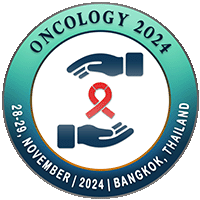
Carol-Ann Benn
TBA, South AfricaTitle: Understanding Cultural barriers improves Breast Cancer Navigation in low resource environments
Abstract
Aim
Patient culture creates a transparent yet substantial barrier to medical care.
1. Inadequate communication, poor public literacy, language differences alter the response to
health messages.
2.Delays in accepting treatment suggestions, differing beliefs of disease/healing results from
the conflict between traditional medicine; cultural beliefs; conventional medicine.
3. Rejection of the biomedical model due to failure in communication and understanding.
Methods
The Helen Joseph breast care clinic manages 500-700 patients monthly with approximately
350 new diagnoses each year. Locally advanced disease (62%) accounts for the majority of
breast cancer diagnoses. Navigators are breast cancer survivors from diverse cultural
backgrounds, ages and ethnicities who function as clinical coordinators/counsellors ensuring
compliance.
This system provides awareness of unseen barriers around patient care from failed clinician
communication.
Results: Navigating the divide of breast health care
Phenomena that affect help-seeking behaviour are ignorance of what the symptom means;
fear of management strategies; outcomes of the disease/treatment process. Conceptualizing
three navigational barriers, creating a patient care model to ensure better outcomes.
1. Navigating the Neighborhood.
Patient navigators from the community highlighted reasons for failure and redirecting
information based on cultural belief systems resulted in an increase in patient attendance.
Problems such as the diversity of languages spoken, poor literacy and suspicion of accepting
advice from women of different cultural backgrounds were corrected by the involvement of the
navigator, providing personalized information and training: understanding
preconceptions/beliefs around the cause of cancer, which were resulting in women not
accessing care.
2. Navigating Hospital Environments:
Insight into the perception of a “hostile hospital environment”: Accessing chemotherapy
facilities; hospital admissions for breast cancer surgery; transport; monetary issues - prevent
patients attending clinics; receiving medication and collection of medication repeats in
financially burdened patients affect compliance. Daily trips to clinics may result in choices of
mastectomy over breast conservation.
3. Navigating medical consultations
Misinformation around treatments or complications around clinical modalities of care may not
be addressed by the treating physician. Some cultures do not have a model of patient
autonomy, with disease perceived as a family issue it is important to ascertain to whom the
news of diagnosis should be directed. Each patient is contacted monthly to determine
concerns (logistically and medically) to facilitate compliance with treatment.
Concerns around the concept of a mastectomy is not a phenomenon unique to
non-westernized cultures and are often managed insensitively by medical practitioners with
the attitude of ‘life over limb’. Women may be unaware of advances such as
breast-conserving surgery and delay treatment due to fear of mastectomy.
Conclusion
The interplay between medicine, culture and beliefs in breast cancer underlines the
importance of patient navigators in the MDT. Navigators should have diverse medical and
cultural areas of expertise ensuring communication between physicians, patients/families and
communities
Biography
TBA

